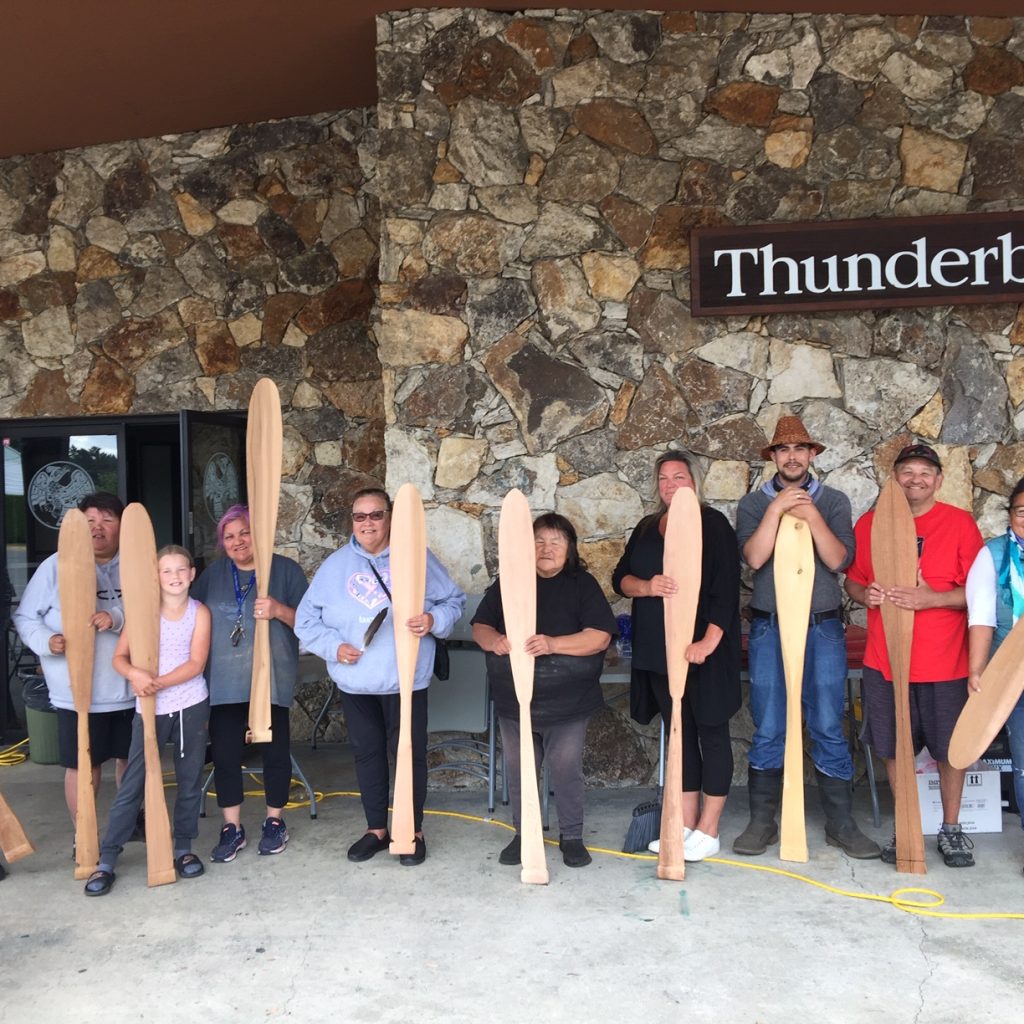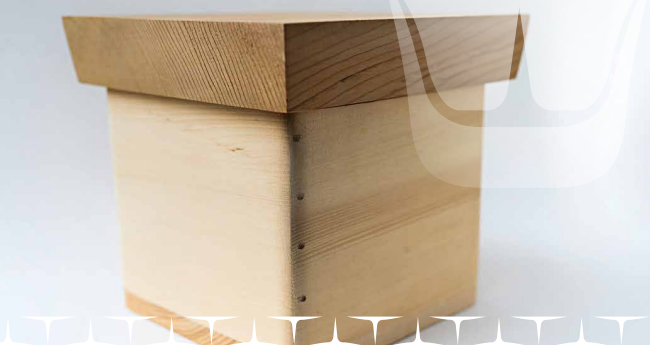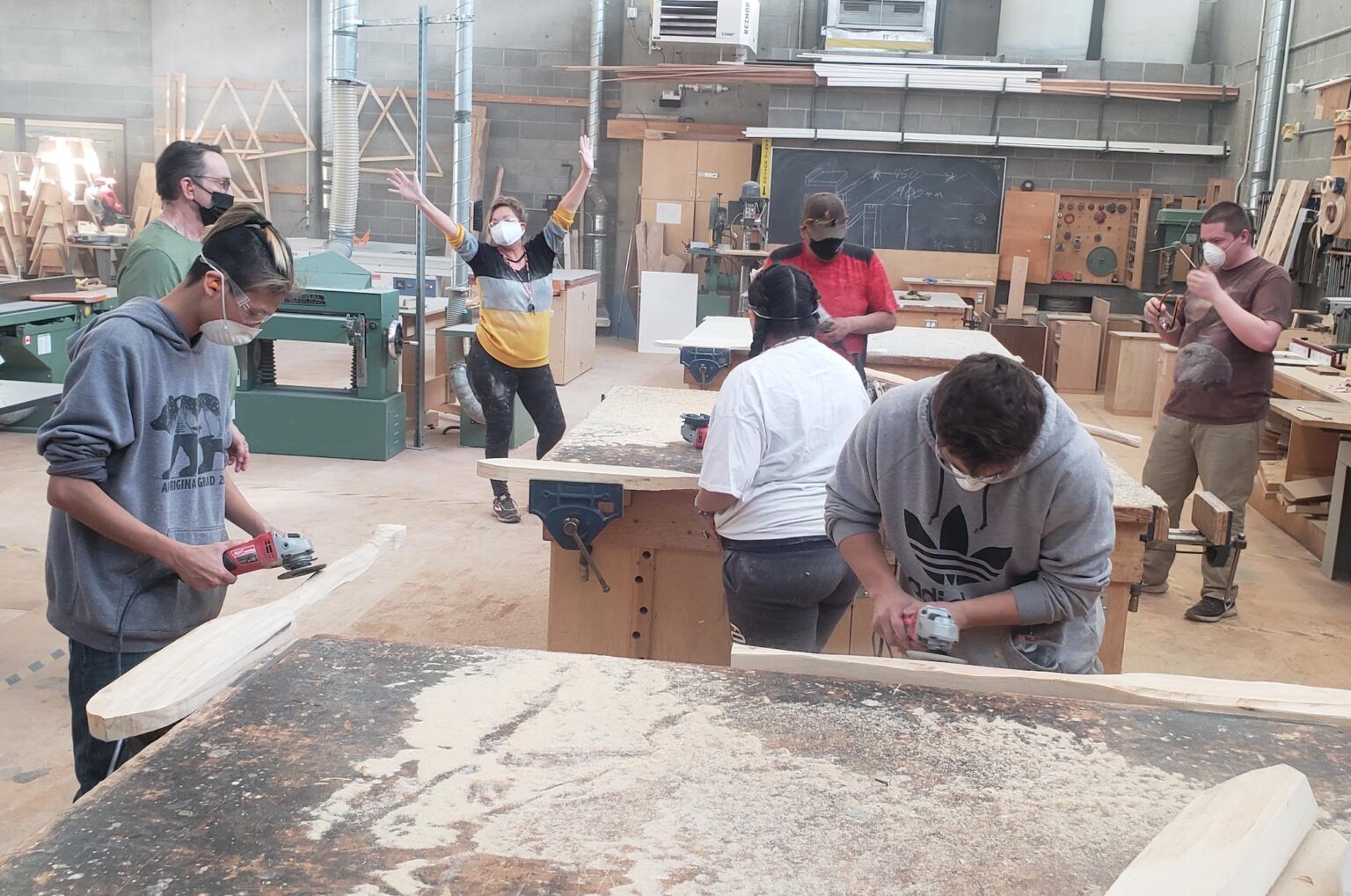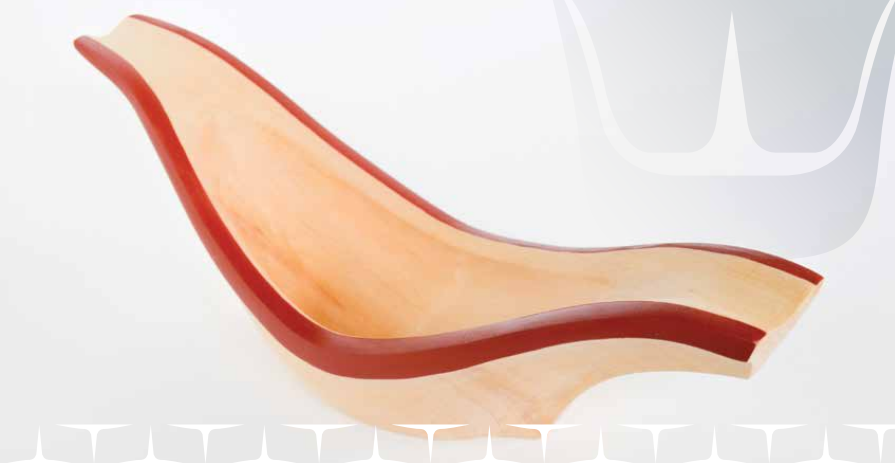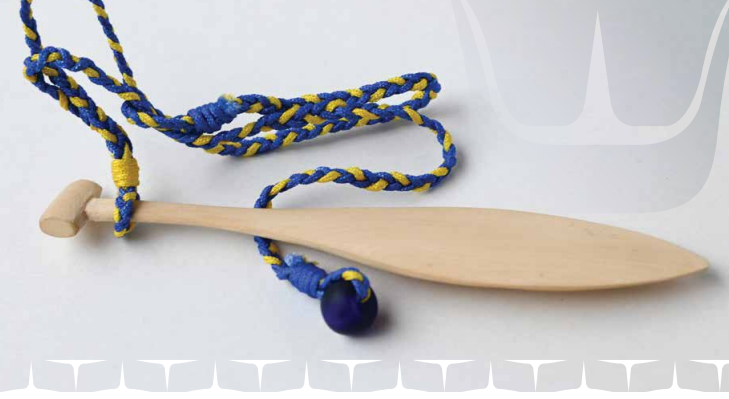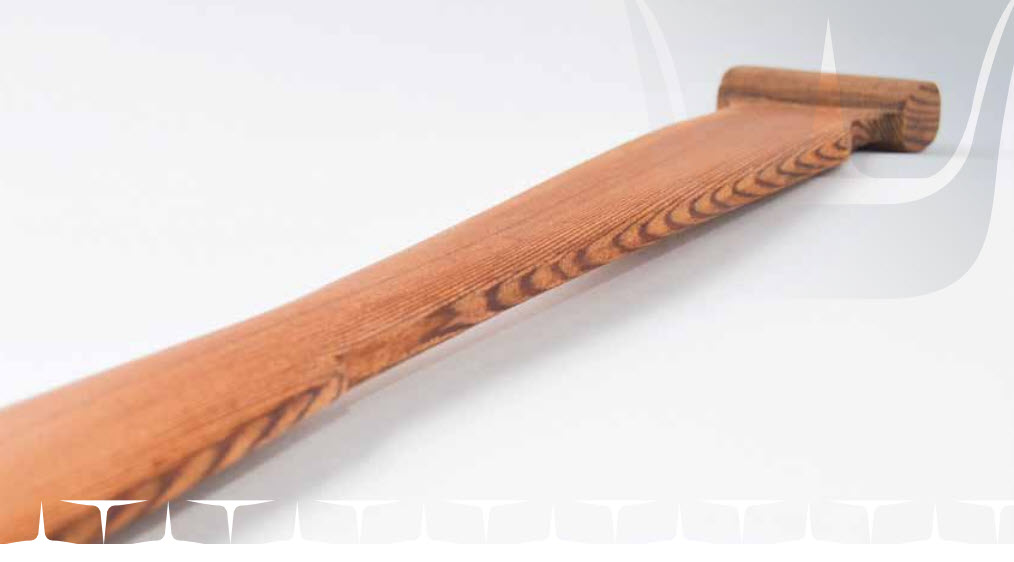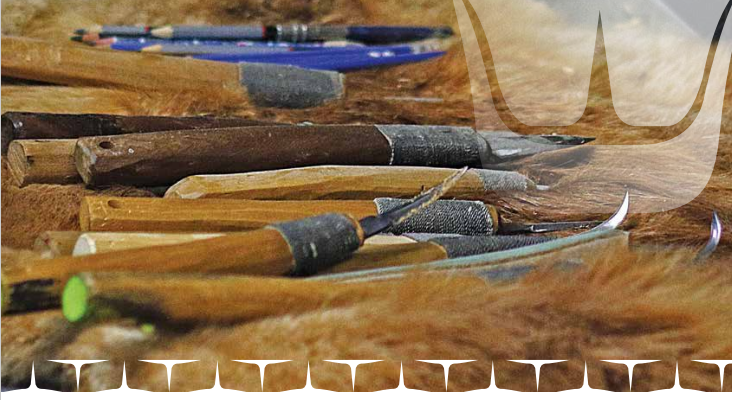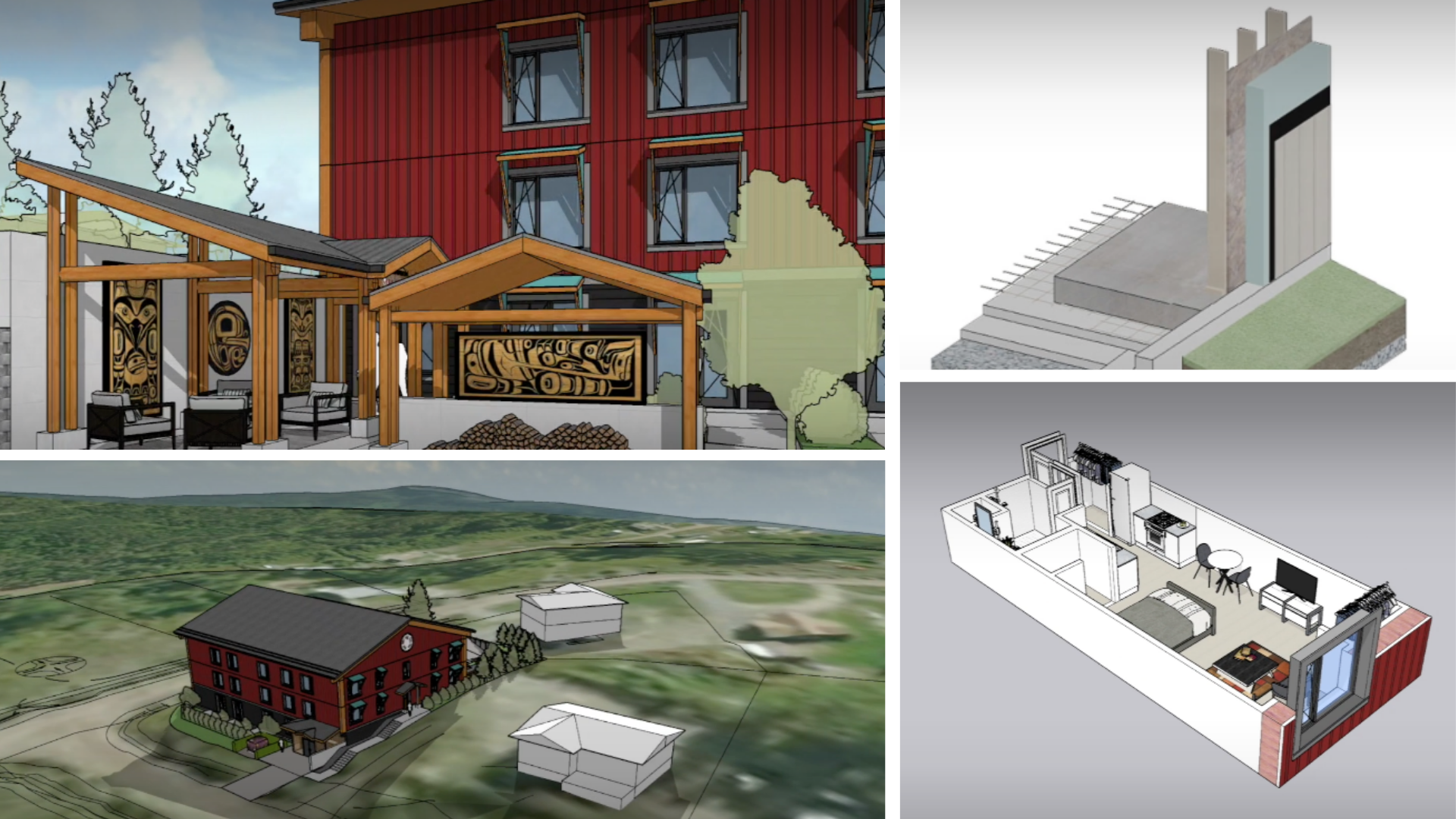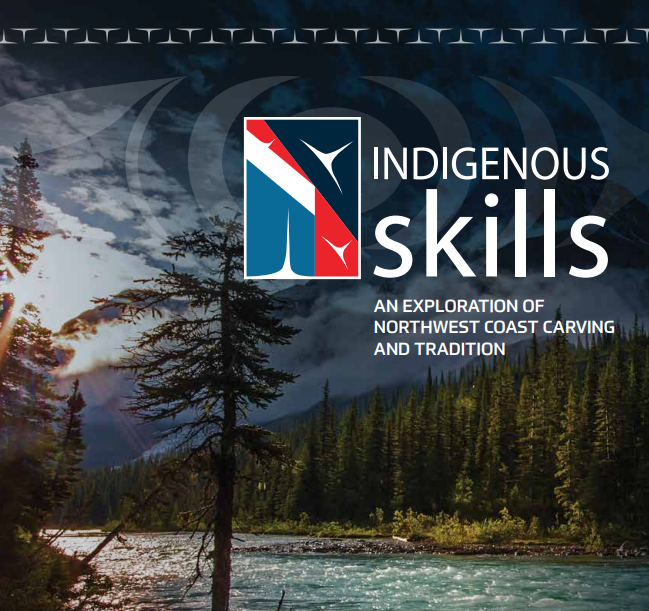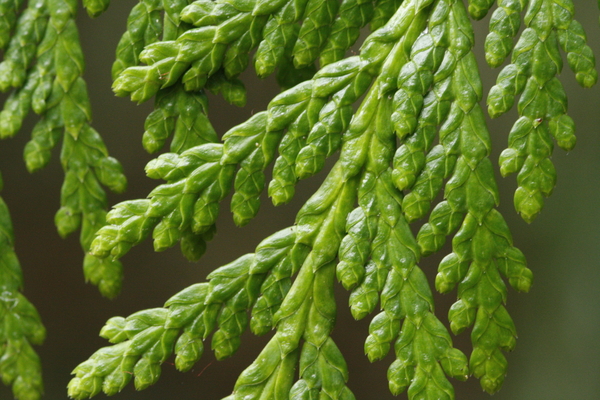Above: Renderings of Witset First Nation Passive House Project, a 26-unit, a three-storey energy-efficient apartment complex that acts as a training opportunity for local Indigenous workers. | Renderings courtesy of Witset First Nation and Cornerstone Architecture
The light-frame wood complex will help the Witset First Nation provide more affordable housing to their community and includes 16 studio units, ten two-bedroom units, three accessible suites, communal kitchen and laundry facilities, counselling room, management offices, and outdoor fire pit. Highly efficient and airtight, the nearly all-wood structure will use cellulose wood fibre as a sustainable and effective insulator. Interior design and colour palettes take inspiration from the works of local First Nations artist James Madam from Gitdumden of the Wetʼsuwetʼen Nation. The project plans to incorporate additional art from local craftspersons.
Community members were able to build on existing experience building with wood. The training included a wood-frame wall mock-up and provided participants with a practical hands-on understanding of how to assemble a Passive House design.
“Wood is a great material for Passive House and many of the participants came with a good knowledge of the basics of light-frame wood construction. Beyond this initiative, the goal was really to leave a positive legacy, empowering participants to not only help construct this project but master the skills needed, and even potentially start their own businesses, in high energy performance and Passive House construction. It was a great way for the participants to take their existing knowledge of wood construction to the next level,” said Luiz Bezerra, Manager of education, training, and development with Passive House Canada.
Building to Passive House standards is well-suited to the climate of the Witset First Nation. Weathering extreme temperatures, energy costs can be a challenge. With Passive House, energy savings for heating can amount to over 75 per cent in comparison to other building types. The initiative not only offers savings but also empowers community members to learn how to construct high-performance, Passive House wood buildings for future projects.
“We worked through the Kyah Wiget Education Society to receive a training grant to educate local trades in high-efficiency building techniques. The education material and instructors were provided through Passive House Canada with the support of 475 High Performance Building Supplies and Euroline Windows for products,” explained Scott Kennedy, lead on the project for Cornerstone Architecture.
“We are working on another community-based project for the Witset First Nation and are hoping to use tours of the housing project to educate the community, including the greater Smithers area in high-performance building and then apply it to the next smaller project,” added Kennedy.
The training is being conducted through the Kyah Wiget Education Society (KWES), a certified Independent school that incorporates cultural content into academic programming for K through 12 students, as well as within college-level programming in coordination with the Nicola Valley Institute of Technology.
KWES trained 13 local members of the Witset First Nation, as well as three members of the Heiltsuk First Nation, on low carbon building practices including prefabrication using BC wood products to meet Passive House standards.
